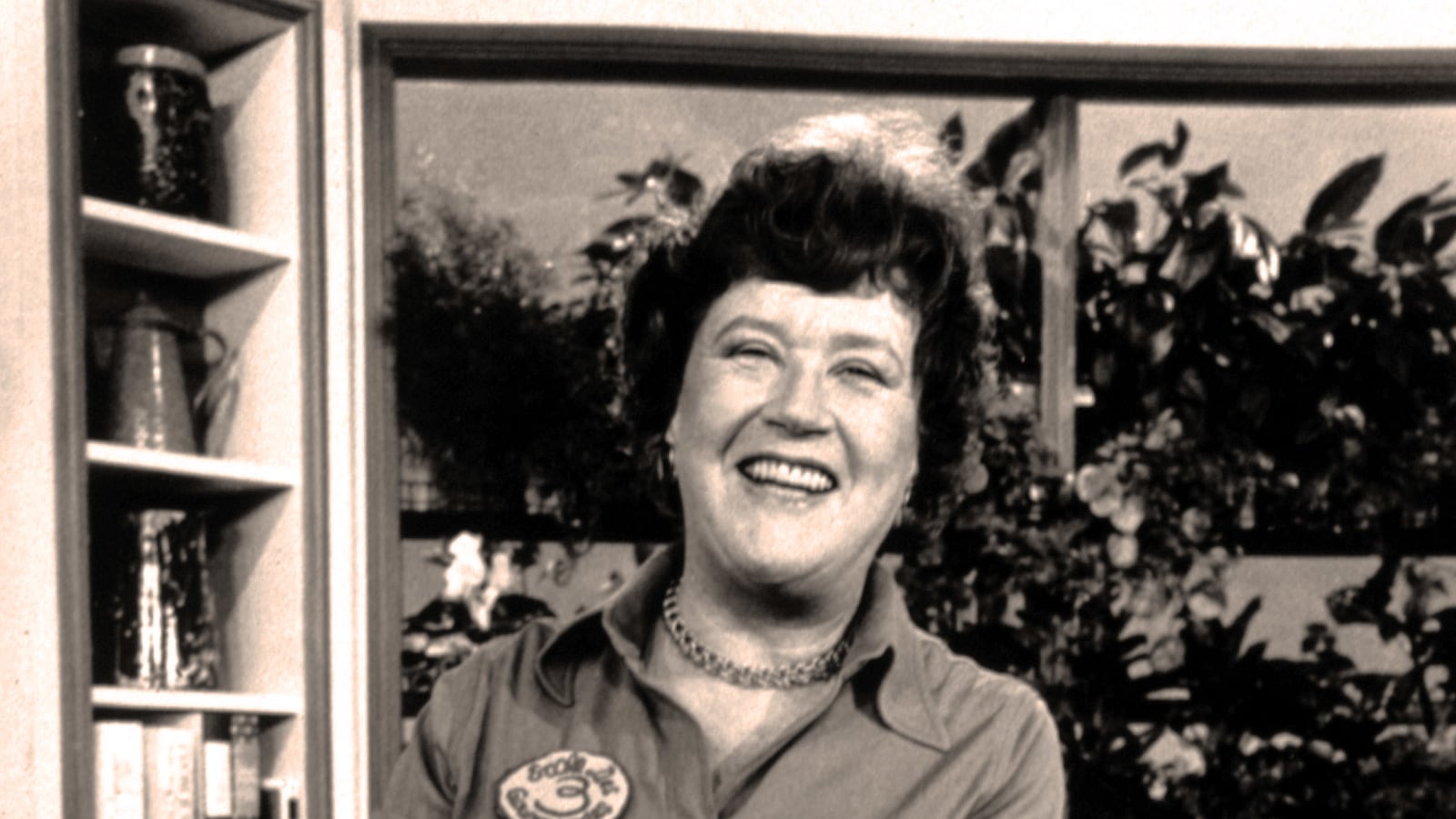As soon as I received a review copy of The French Chef in America, Alex Prud’homme’s new intricately and intriguingly detailed biography of his delicious, good-naturedly opinionated great-aunt, Julia Child, I went right to the index in hopes of finding my name. That would mean that some of our meetings and exchanges had been worth chronicling for posterity.
I suspect this will be standard practice for anyone in the food world whose paths crossed those of the woman whose TV cooking shows brought perfect understanding of French cuisine to all of America.

Sure enough there were several mentions, the longest of which recalled the most defining experience, one that colored our entire relationship ever after. The date was July 8, 1976, just a few months after I arrived at The New York Times and, as I recall, before I ever had met Julia. The event was a state dinner at The White House given by President and Mrs. Gerald Ford to mark our bicentennial with Queen Elizabeth II and Prince Philip as the guests of honor. (Come to think of it, it was a sly reminder that “We won. You lost.”)
Julia was scheduled to observe and record the preparations and then to appear live on PBS narrating the event that very night as it took place. Both The Washington Post and The New York Times were invited to send a food reporter to cover Julia covering the preparations and I was chosen for the task. It was a wonderful day seeing the lovely tent decorations where the dinner would be held and being inside that hallowed kitchen as chef Henry Haller implemented the French-continental menu. As he worked he reported food preferences of past presidents he had worked for and as quoted by Prud’homme: “Nixon didn’t eat many things. He didn’t like lamb or calves’ liver or a lot of things and it was hard to make an interesting menu. The Fords liked almost everything—even liver and red cabbage cooked with wine, the French way.”
My partial comment in reporting the event and as included in Prud’homme’s book, was about the nature of the food selected. “Through it all, one could not help wondering if a really imaginative, thoroughly American dinner, might not have been more interesting and appropriate to the occasion than this menu which, though elegant and appetizing, was all-purpose international.”
Thinking I had pulled my punches, I was surprised (and, let’s face it, a bit delighted) to hear Julia on PBS that very night as she narrated the event, and, addressing my comment, saying something like, what should have been served? Fried chicken and hamburgers? As told in this book, she also wrote something similar in The New York Times Magazine about six months later. “There was a lot of public caterwauling at the time of the Queen Elizabeth dinner…” I assumed that she was embarrassed for chef Haller and felt responsible for the unexpected criticism as it was under her auspices that I had been there.
Nevertheless, we eventually had friendly meetings through the years even though, now and then, while speaking at an event she would say something like young chefs might be discouraged if they think Mimi Sheraton is going to give them negative reviews.
In fact, she once suggested that I should write only the positives and it was hard to convince her that negatives give positives their value. Despite a subtle undertone of mistrust that I felt she had toward me, I recall a wonderful lunch at famed Manhattan restaurant La Grenouille with Julia and her charming husband Paul, my husband Richard Falcone, and her remarkable editor Judith Jones, to whom this new book is appropriately dedicated.

Another time when I was reviewing restaurants in Boston for the Condé Nast Traveler, I invited Julia to join us. My husband and I picked her up at her Cambridge home—to have a glass of wine and view her iconic kitchen, so that I could get some valuable ideas for a new one I was putting in my Greenwich Village brownstone. We then drove to Jasper’s restaurant where I had made a reservation in a fake name, as always when I was reviewing an establishment. The second we walked in Julia was recognized and introduced me to Jasper White as he ran out of the kitchen and said, “I always tell my staff, it’s important that I be here. You never know when Julia Child will walk in with Mimi Sheraton.”
Regrettably, I never got to visit Julia in her idyllic La Pitchoune, the Provence home so enticingly described in this book, we did, however, have a diffusely memorable dinner in Santa Barbara where she spent the winter and, again, where I was reviewing restaurants.
My husband and I picked her up at her apartment and she demonstrated a new, complex corkscrew with which she opened a bottle of white wine. It was all consumed before we left. At the restaurant the three of us downed two bottles of a Bordeaux the label of which I cannot remember. All I do recall is the giggly, precarious drive to get the beloved, merry Julia safely back home.

